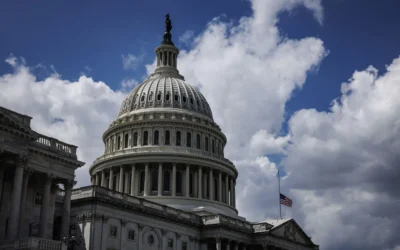Understanding PFAS: The ‘Forever Chemicals’
Per- and polyfluoroalkyl substances, commonly referred to as PFAS, are a group of man-made chemicals that have sparked a significant public health debate. These substances are notorious for their persistence in the environment and human body, leading to their nickname: “forever chemicals.” In recent years, concerns over PFAS contamination have led to heightened scrutiny of drinking water safety across the United States.
What Are PFAS?
PFAS are a class of over 4,700 synthetic chemicals used in various industrial applications and consumer products. They have been employed in the manufacturing of non-stick cookware, water-resistant clothing, food packaging, and stain-resistant fabrics. Their distinct resilience to heat, water, and oil makes them useful for these applications; however, their environmental persistence raises serious health questions.
The Health Risks of PFAS Contamination
Numerous studies have linked PFAS exposure to various health issues, including increased cholesterol levels, immune system damage, hormonal disruptions, and certain cancers. The risks are particularly concerning for vulnerable populations such as pregnant women, infants, and individuals with pre-existing health conditions. According to the Environmental Protection Agency (EPA), these chemicals have been detected in drinking water supplies across the country, affecting millions of Americans.
Recent Developments: The Trump Administration’s Approach
Throughout the Trump administration, the government’s stance on environmental regulations, particularly concerning PFAS, has been marked by controversy. As concerns mounted over contamination levels, the administration grappled with how to address these pervasive chemicals in drinking water.
Upholding Some PFAS Limits While Eliminating Others
In a recent move, the Trump administration announced that it would uphold certain limits on PFAS in drinking water but also aimed to eliminate others. This dual approach left public health advocates puzzled and concerned about potential increased exposure to these dangerous chemicals.
The Rationale Behind the Decision
Supporters of the administration’s approach argued that the changes were designed to provide flexibility to states and local governments dealing with PFAS clean-up initiatives. They maintained that well-crafted regulations are essential to balance environmental protection with economic considerations. Critics, on the other hand, accused the Trump administration of prioritizing industry interests over public health.
Environmental Protection Agency’s Rollback of PFAS Rule
Compounding the issue, the EPA announced plans to roll back certain regulations originally put in place to address PFAS contamination. One of the recent regulatory rollbacks involved extending the timeline for states to implement PFAS testing in drinking water systems. Critics have argued that extending timelines exposes vulnerable populations to potential harm while delaying critical health safeguards.
What This Means for States and Local Governments
The rollback signifies a retreat from proactive measures to address PFAS contamination. Many states had already begun enacting stricter regulations in anticipation of federal guidelines. Now, with the EPA taking a step back, state officials are concerned about the possible impact on public health outcomes.
The Path Forward: Advocating for Safe Drinking Water
The tussle over PFAS regulation underscores a larger national conversation about environmental governance, corporate responsibility, and public health. As scientists continue to study the long-term impacts of PFAS exposure, advocacy groups stress the importance of comprehensive regulation and monitoring of these chemicals.
What Can Communities Do?
For individuals living in areas known to have PFAS in their drinking water, there are proactive steps that can be taken:
- Water Testing: Homeowners can conduct water tests to determine PFAS levels in their drinking water supply.
- Filtration Systems: Consider investing in filtration systems designed to reduce PFAS levels.
- Stay Informed: Keep abreast of local and state water quality reports and advocate for transparency in environmental monitoring.
The Role of Environmental Advocacy Groups
Environmental groups are increasing their advocacy efforts to ensure robust regulations are implemented to protect public health from PFAS exposure. Several organizations are campaigning for stricter controls on PFAS production and usage, pushing for legislation that would hold manufacturers accountable and mandate cleanup of contaminated areas.
Legislation on the Horizon
As public awareness of PFAS and its dangers rises, lawmakers at both state and federal levels are beginning to draft and propose new legislation aimed at combating PFAS pollution. This could include bills focused on:
- Setting enforceable drinking water standards for PFAS.
- Increasing funding for clean-up efforts in contaminated areas.
- Encouraging research into alternative chemical substances that do not pose the same health risks.
The Future of PFAS Regulation
As the debate over regulatory changes continues, it is clear that PFAS presents a complicated issue requiring careful consideration from all stakeholders. The balance between protecting public health and fostering economic growth is critical to ensuring safe drinking water for all Americans.
Conclusion
PFAS chemicals, with their far-reaching health implications, will remain a pressing public concern for the foreseeable future. As regulations evolve and new scientific studies emerge, advocacy for stringent control measures will be paramount. Public interest in environmental health safety needs to sustain its momentum to ensure that drinking water remains safe for generations to come.







